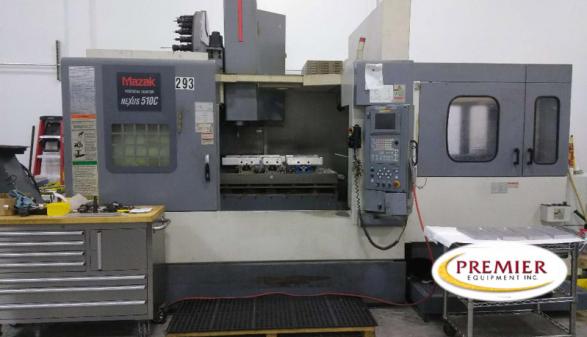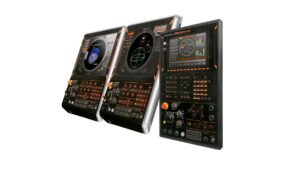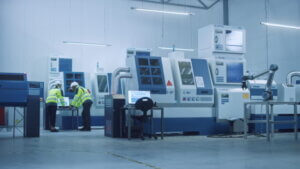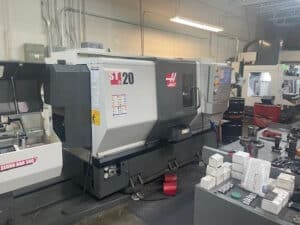If you’re familiar with CNC machines, CNC CAD CAM isn’t new for you, but have you weighed the benefits and disadvantages of combining CAD and CAM? Here are some of the most notable pros and cons.
Computer-aided manufacturing (CAM) uses software to control CNC machine tools for manufacturing parts and products. This drastically speeds up the production process. Computer-aided design (CAD) works hand in hand with CAM by providing the design instructions for the machine to follow.
Advantages of Using CAD/CAM with CNC Machines
Higher Efficiency
Machine automation is a revolutionary innovation in the manufacturing industry. Combining CAD and CAM to automate the manufacturing process has skyrocketed efficiency for manufacturers globally.
With increased efficiency, companies are able to take on harder and more complex jobs with less effort than ever before. There are plenty of products produced by CNC machines today that wouldn’t even be possible to produce by hand.
Faster Project Turnaround
The responsibility of a slow project turnaround isn’t always resting on the manufacturer’s shoulders. Production can be held up from clients not submitting CAD models and other necessary information.
Combining CAD and CAM can help automate this process to receive models from clients faster and even grab more information during the project quoting process. With CAD/CAM, the CNC machines can run tests, simulate the prototype and start machining faster than ever before!
More Control Over Your Project
Managing manufacturing projects requires a high level of visibility to maximize efficiency. CNC CAD CAM allows you to track your jobs with a CAM Tree Manager. This technology has a wealth of benefits, including the ability to save and load templates, reorder sequences and copy and paste machining operations.
Having more control over your project with this advanced technology leads to fewer errors, therefore resulting in faster production cycles and minimal revisions needed.
Less CNC Training Required
Technology is only as good as the person operating it—unless the machine can do the heavy lifting. CAD/CAM has the ability to train the operator. This is an advanced development that has led to less required training for new CNC operators.
Not only does this reduce error and provide more opportunities to produce complex parts for experienced operators, but it also allows new programmers to be successful sooner as well as learn advanced techniques.
Increased CNC Machine Productivity
With new developments in CNC technology, we now have high-speed machines that allow for reduced cycle times and also minimize the wear and tear on both the tools and machines.
CAD/CAM has improved the actual quality of the cut with high-speed toolpaths that don’t have the stop and go of traditional offset toolpaths. Now, we can cut deeper with constant tool engagement, allowing the ability to use more of the machine’s inherent qualities.
Eliminate Mistakes and Waste
In this age of the manufacturing industry, CAD/CAM allows for machining-process inspection with advanced simulations. This allows operators to identify possible tool gouges and collisions before they happen. The value of the simulations alone is unmatched, saving on production time, avoiding repairs and replacements, and conserving company funds.
Disadvantages of Using CNC CAD CAM
There aren’t many disadvantages of CAD/CAM in manufacturing with CNC machines, but there are a few you should consider.
Processing Power Limitations and Cost
The software to operate CNC machinery consumes large amounts of processing power. That requires some powerful, high-quality computer hardware and can be a large upfront cost. That’s not to say you won’t get your money’s worth, but it is something to take into consideration for operation costs.
Software Complexity
CAD/CAM is becoming more and more flexible and adaptable, which in turn makes it more complex. This can be difficult for first-time users to learn the software, although the machining-training abilities within the software mentioned above reduce this onboarding friction.
Technological Failure/Glitches
All technology, whether it be a personal laptop or a large piece of CNC machinery has a risk of breaking down at any point or needing regular maintenance and repair. This is a risk with any new technological advancement you’re investing in.
That’s why having a quality-assurance team is crucial to your business’s success. Combatting this chance of tech failure, they can catch glitches as they occur in the automated manufacturing process.
Conclusion
In summary, the benefits of using CNC CAD CAM in machining vastly outweigh the disadvantages and risks. It’s important to consider both when making a big software or hardware purchase for your business. Want to learn more about CNC machines? Visit our CNC blog!



